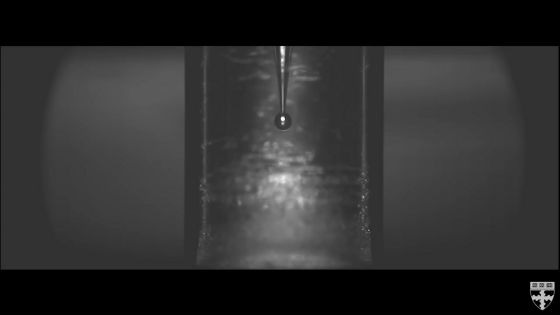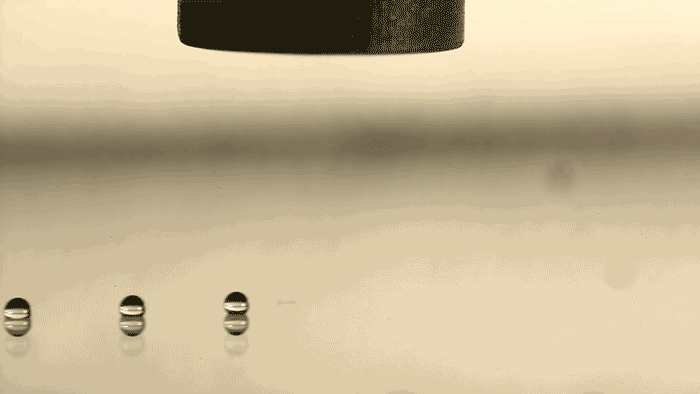Harvard University develops 'acoustic printing' technology that can output ultra-viscous liquid with extremely small size as well

It was difficult to output only a small amount of highly viscous liquid like honey because of the high viscosity, but researchers at Harvard university are able to freely change the amount of viscous liquid by using sound waves We are developing technology " Acoustophoretic Printing " that can be adjusted and output.
Printing with sound | Harvard John A. Paulson School of Engineering and Applied Sciences
https://www.seas.harvard.edu/news/2018/08/printing-with-sound
What kind of technology is "Acoustophoretic Printing" is explained in the following movie.
Acoustophoretic Printing Summary - YouTube
Technologies for producing droplets are used in a wide range of fields, from inkjet printers to the manufacture of microcapsules for drug delivery.

However, some of the biopolymers have a viscosity of 25,000 times that of water, and it was difficult to output only a small amount of highly viscous liquid. In addition, viscosity of highly viscous liquid changed viscosity depending on temperature, making it difficult to output a certain amount.

Dr. Jennifer Lewis's research team at Harvard University has developed a technology "Acoustophoretic Printing" that can control the amount of dripping without depending on the viscosity of the liquid and the outside temperature using sound waves.

By high frequency sound it is possible to apply physical force with sound wave so that the droplet can float as if canceling gravity.

In Acoustophoretic Printing, by changing the amplitude of the sound waves inside the nozzle, even if it is a highly viscous liquid, it was possible to separate it from the tip of the nozzle and output it.

The larger the amplitude of sound waves, the smaller the droplet size can be. By controlling the amplitude, it is possible to control the droplet size with high precision.

By Acoustophoretic Printing, optical lenses ... ...

It is possible to output liquid containing cells. This is realized from the characteristic that sound waves do not pass through the liquid, and Acoustophoretic Printing can be safely used even for delicate substances such as living cells and proteins.

In addition, since Acoustophoretic Printing can adjust the output of liquid without depending on temperature, it can even even finely print 3D metal materials.

Harvard University has obtained patent on Acoustophoretic Printing technology. In the future, it is expected not only for inkjet printers, but also for a wide range of fields such as biotechnology, optical fields, foods, etc., mainly pharmaceuticals.

Related Posts:







